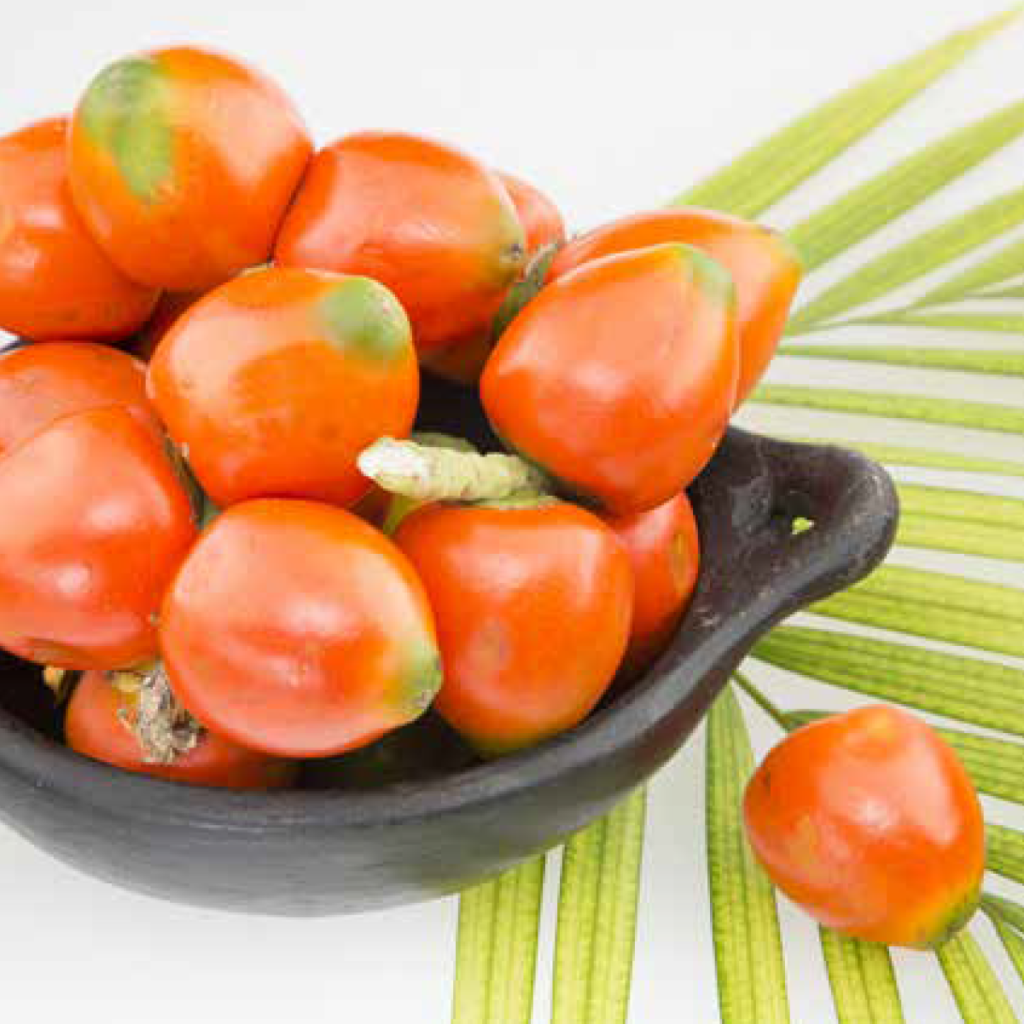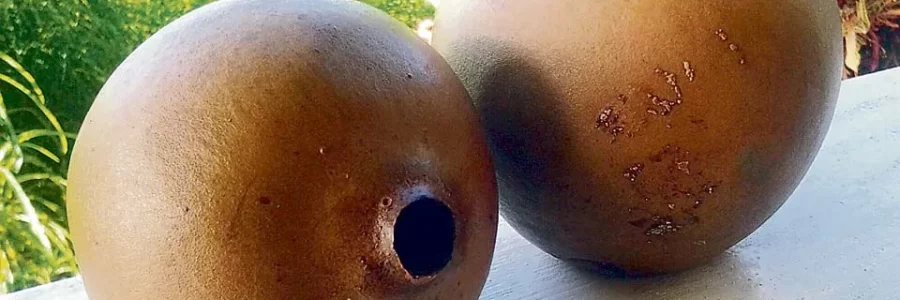Maca – Chontaduro – Borojó
What is maca?
Maca (Lepidium meyenii) is a plant that grows in 4000 meters above sea level in the central Andes of Peru. It presents different varieties according to the color of its hypocotyl. This review summarizes the results of studies on the effects of maca on sexual function, spermatogenesis, female reproductive function, memory, depression and anxiety, as an energizer and against benign prostatic hyperplasia, osteoporosis and metabolic syndrome. Its also discussed its anti-aging effect and safety in its consumption. Differences have been demonstrated in the effect of varieties: black, yellow and red maca. The black maca is the one which presents better results on spermatogenesis, memory and against fatigue, while red maca is the variety that best reverses benign hyperplasia of prostate and experimentally induced osteoporosis. In addition, maca reduces glucose levels, and its consumption is related to the reduction of blood pressure and a better health score. Experimental studies have shown that consumption both short and long term does not show toxicity both in vivo as in vitro; however, despite the various beneficial effects demonstrated by these studies, further clinical studies are needed to confirm these results
MACA AND ITS SEXUAL FUNCTION.
Testosterone increases sexual desire in both sexes and favors erection in men. The decrease in testosterone serum levels are associated with lower desire sexual and erectile dysfunction. Testosterone treatment would be effective in these cases, but the fear of its adverse effects causes its use to be not common, that is why people look for other treatment options.
Differences have been demonstrated in the effect of varieties: black, yellow and red maca. The black maca is the one which presents better results on spermatogenesis, memory and against fatigue, while red maca is the variety that best reverses benign hyperplasia of prostate and experimentally induced osteoporosis. In addition, maca reduces glucose levels, and its consumption is related to the reduction of blood pressure and a better health score.
Two clinical trials suggest a favorable effect of maca on sexual dysfunction or sexual desire in healthy menopausal women or healthy adult men, respectively, while in another clinical trial the reviewers state that there is no effect of maca on healthy cyclists. However, the results of the study show that maca extract significantly improves sexual desire compared to baseline values (p=0.01), or with placebo (p=0.03). A systematic review that evaluates the effect of maca on the improvement of sexual function in human’s states that the evidence is still limited

What’s Chontaduro?
Recommended by nutritionists, the indigenous people villages were the first to cultivate and consume this exotic food, of which many aspects are unknown. The chontaduro is a source of all macronutrients; has protein, good quality carbohydrates and fats. In addition, it contributes vitamin A, B complex and good fiber.
From scientific evidence, such as MRI proton nuclear power (NMR) carried out in the Laboratory of Industrial Analysis from the Universidad del Valle in Colombia, the compounds of this food have been observed at a molecular level and some unknown benefits were verified by experiments.
In a test with rodents fed on this fruit was shown that including it in the diet. they can lower cholesterol and triglyceride levels. In addition, “we found that the fertility factor increases much, at least in rats it improves reproduction about 50%.” This happens due to the presence of vitamin E.
Despite the age of its consumption and the variety of health benefits that are being discovered, the Chontaduro continues to be an exotic and occasional food in the diet of most people, even in the Valley of the Cauca where it is most recognized. But, as usual, “it would be consumed much more and in other parts of the world if people would be more aware of its nutritional power”
The food of happiness?
Work is already underway on “an investigation into why people who consume chontaduro are so happy?” Our hypothesis is that chontaduro has arachidonic fatty acid, which is a precursor of anandamide (AEA) which is the molecule producer of states of happiness
Processing of Chontaduro
Colombia is a leading country in the commercialization of chontaduro, although the vast majority of consumption is evident in informal trade, some merchants are opening fields and implementing strategies to send chontaduro abroad in different presentations. For example, foods such as flour, chili, sauces, rice, pasta, soups, yogurts, jams, among others, have already been created. It has also been tested in more elaborate dishes from the cuisine of the Pacific. On the other hand, it is also used in the world of cosmetology: in lip moisturizers, oils, hand and body creams, among others.
Over the years, chontaduro has been adopted as ‘the vegetable egg’, due to its high vitamin, caloric and mineral content. It’s rich in essential amino acids, proteins, polyunsaturated fatty acids, omega 3 and omega 6, vitamins A, C and D, E, carbohydrates, and minerals such as iron, magnesium, phosphorus and calcium. For this reason, this fruit turns out to be a complete and nutritionally balanced food, which provides endless benefits for health.

What’s borojó?
It’s native from the tropical humid forest of the Colombian Pacific (Chocó biogeographic), southern Panama and north-western Ecuador, with a relative humidity of 85%, an annual rainfall of 4,000 mm and an average temperature of 28 °C. It’s found in the wild and in family and commercial plantations. This tree reaches a height of 3 to 5 m. The fruit is globose, 7-12 cm in diameter, green to brown. It’s collected from the ground when fully mature. It weighs between 740 and 1000 grams, of which 88% are with pulp. This pulp is acidic and dense; it mainly contains fructose and glucose, and significant amounts of protein, phosphorus, and vitamins B and C, as well as calcium and iron contributions. It’s used to prepare compotes, jams, candies, wine and the famous love juice, with supposed aphrodisiac properties. In traditional medicine it is used to treat bronchial conditions, malnutrition, hypertension, cancer, erysipelas. It’s used as an energizer and as hair treatment. In cultural knowledge there is a tendency to believe that it serves as an aphrodisiac, although there is no evidence that this is the case. The pulp is also used as a poultice for cures, such as erysipelas today called cellulite, for swellings from blows in the human body, as a diuretic, and as an stimuli aphrodisiac for couples.
Borojo processing:
Borojó treatment includes a meticulous selection, a process of separating seeds and shells, to later package the pulp (edible part of the fruit) and freeze it at a temperature of -10 degrees Celsius. The concentrated pulp of the borojó is diluted with water for the preparation of juices or sorbets in the preparation of soft drinks. The frozen pulps do not have any preservatives, they maintain the flavor and nutritional characteristics of the borojó. To prepare the juice, simply thaw the pulp, add water or milk, sugar to taste, obtaining a 100% natural juice. The consumption of borojó has multiple benefits, they are an essential source of fiber for the proper functioning of the digestive system, they have significant levels of vitamins A, E and C, proteins, natural sugars, water and do not contain cholesterol. Borojó is cultivated in different habitats above sea level (100-400 m) and with different temperature and rainfall conditions, which provide the ideal environment for its cultivation. Its maturation is totally natural and after the harvest, a careful selection provides us with the best borojo, from which we extract its edible part (pulp), the basis for the preparation of a delicious natural juice and multiple products in the ice cream, soft drink, confectionery, preserves industries, etc.

©2023
